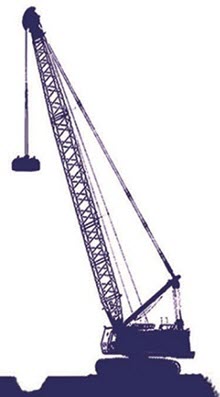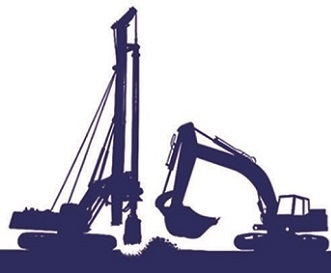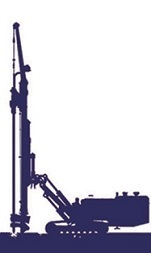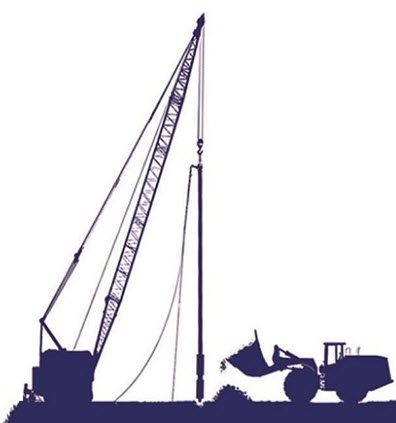Samanpey Services
Soil Nailing and Anchorage
Ground anchor and soil nail retaining systems are designed to stabilize and support natural and engineered structures and to restrain their movement using tension-resisting elements. The basic design concept consists of transferring the resisting tensile forces generated in the inclusions into the ground through the friction (or adhesion) mobilized at the interfaces. (Hausmann,1992) These systems allow the engineer to efficiently use the in-situ ground in providing vertical or lateral structural support. They present significant technical advantages over conventional rigid gravity retaining walls or external bracing systems that result in substantial cost savings and reduced construction period. Therefore, during the past few decades, ground anchors, and more recently soil nails, have been increasingly used in civil engineering projects.
Micropiles and Underpinning
Micropiles are small diameter drilled and grouted friction piles where each pile includes steel elements that are bonded into the bearing soil or rock – usually with cement grout. The bearing stratum is logged during installation drilling to assure that bearing capacity is adequate. Micropiles do not rely on end-bearing capacity, so there is no need to establish the competency of rock beyond bond-depth. They can be installed quickly in virtually every type of ground using highly adaptable mobile drilling equipment.
Underpinning is a method used to increase foundation depth or repairing faulty foundations. This might be the case if you plan to add stories to an existing structure or when the foundation has been damaged. One visible sign that your building needs underpinning is when cracks are visible. A building needs underpinning its foundation when cracks are wider than ¼ inch and there are some signs of a faulty foundation, especially diagonal cracks.
Vibro Stone Column
Vibro stone column technique is one of the most widely-used ground improvement processes which is mainly employed for deep improvement of granular (cohesion less), cohesive and mixed soils. This method which has a physical-mechanical nature is being successfully implemented by many contractors worldwide and is considered as one of the most efficient and commonly specified soil improvement methods. In recent years, some of the domestic geotechnical and contractors have attempted to apply this competent method by preparing required tools and equipment. In this method dense aggregate columns (stone columns) with adequate cohesion are constructed in weak soils. In fact, these columns are constructed through replacement and relative densification of the soil and well-grained gravel and sand materials. In other words, this method is combination of Vibro-Compaction and vibro-replacement methods.
Jet Grouting and Deep Soil Mixing
Jet grouting is a soil improvement technique being currently utilized throughout the world which was originated in Japan This method increases strength and bearing capacity of soils. In this method, initially, small holes are drilled to the required depth Then, the soil is eroded by a high pressure jet of grout, water or air-enshrouded grout or water, and the simultaneous injection of cement suspension grout into the disturbed soil by means of a nozzle. The drill stem and nozzle are simultaneously raised and rotated so as to combine the grout with a portion of the original soil to form solidified soil mixed material.
Deep Soil Mixing is a method simply known as DSM is an advanced ground improvement method in which strengthening materials such as cement or slurry are mechanically mixed with in-situ soil to form in-place soil-cement columns that increase the strength and reduce the compressibility of soft ground This process produces a uniform soil-cement column (with constant width) by overlapping the walls, continues walls can be constructed beneath ground surface.
Site Investigation and Consultant
Site Investigation and consultant services of samanpey focuses on in-situ soil investigation, laboratory tests and in-situ soil and ground improvement tests. The understanding of the subsurface conditions is fundamental for the stability of civil engineering structures. If this major some of the engineering geology is to be succeeded, a comprehensive and reliable site investigation must be always conducted in time, for the study of the mechanical properties of the subsurface, on the site where structures will be founded This is a geotechnical investigation and includes fieldwork and laboratory test on on representative samples.
Saman Pey Co.
More than a decade of geotechnical engineering and soil improvement experience:
Nailing and Anchorage
Micropile and Underpinning
Vibro Stone Column
Jet Grouting and Deep Soil Mixing
Site Investigation and Consultant
Our office
5th Floor, No. 2, Bamdad Alley,
Moetaqed St., Kolahdouz St.,
Dr. Shariati Ave., Tehran, Iran
Call us Now: 021-22002420





